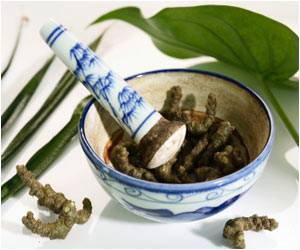Researchers are on the verge of a breakthrough in antibacterial products by identifying enzymes in the carnivorous pitcher plants that prevent bacterial and fungal infections.
Japanese researchers are on the verge of a breakthrough in antibacterial products by identifying enzymes in the digestive fluids of carnivorous pitcher plants that prevent bacterial and fungal infections.
Naoya Hatano from the Harima Institute in Riken and Tatsuro Hamada from Ishikawa Prefectural University in Japan, who have identified seven proteins in the carnivorous plant's fluid, suggest that their discovery could prove useful in warding off bacteria and controlling infections.The ability to digest flesh has evolved independently across many plant lineages, leading to at least nine families and 600 species of carnivorous plants.
One type of carnivorous plant is the pitcher plant, which has developed several ingenious ways to trap its prey, which can be as small as insects, or as large as frogs, small birds, mice, and even rats. There are flypaper traps covered in a sticky excretion, hinged snap traps which snap shut when hairs are touched, suction traps, and lobster pot traps in the form of twisted tubular channels.
A fifth kind is the pitfall trap, which has slippery tips and sides. The prey is attracted both by colour and odour but invariably slips down into the digestive fluid at the bottom of the pitcher and cannot climb out. The struggle to escape triggers the release of digestive fluids and their fate is sealed.
Few enzymes responsible for this activity have been identified. For instance, in the Nepenthes family, which contains about 100 species of pitcher plants, only two proteinases have been identified in the pitcher fluid.
Now, the Japanese scientist duo have undertaken a study of the insectivorous N. alata in order to try and extend our knowledge of the pitcher fluid composition.
Advertisement
Because some of the enzymes they found were unfamiliar, they searched protein databases to find enzymes with similar structures and noted that some of them were probably not digestive at all.
Advertisement
The concept of preservational enzymes in digestive juice may not fit with pitcher plant’s composition at first, but these plants consume insects very slowly, so they compete with bacteria that grow on the insect, stealing the nutrients from the plant, explains Hamada.
Covering the prey with antibacterial enzymes leaves more insect for the plant to drain of nutrients later, he adds.
“These enzymes could potentially be useful in preventing bacterial and fungal infections,” Nature quoted Hamada, as saying.
However, he warned that further research is needed for their full potential to be realized in agriculture and medicine.
The findings are published in the Journal of Proteome Research 1.
Source-ANI
SRM/L







